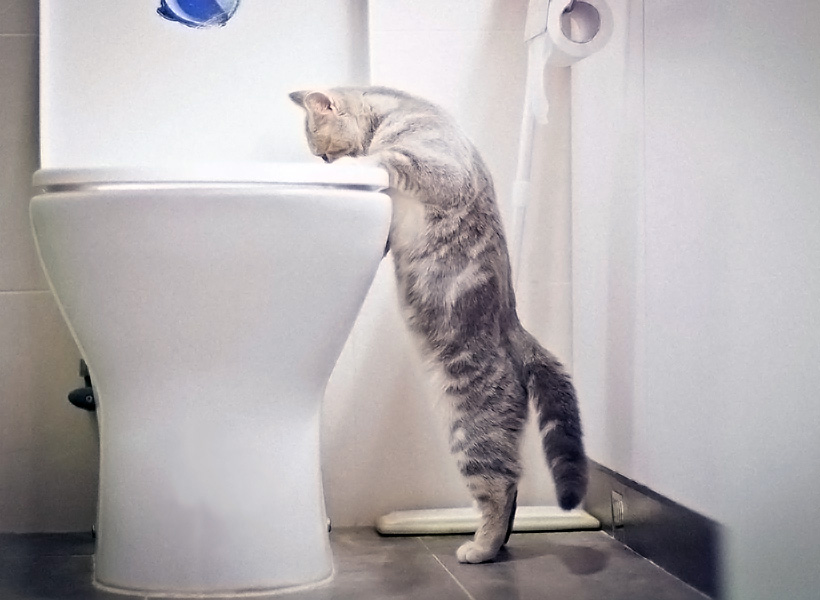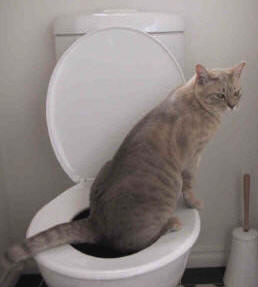The Consequences of Flushing Cat Poop Down Your Toilet - Protect Your Plumbing
The Consequences of Flushing Cat Poop Down Your Toilet - Protect Your Plumbing
Blog Article
Just how do you actually feel about Don’t flush cat feces down the toilet?

Intro
As feline owners, it's vital to be mindful of how we dispose of our feline good friends' waste. While it may appear convenient to purge cat poop down the commode, this practice can have damaging consequences for both the atmosphere and human wellness.
Alternatives to Flushing
Thankfully, there are more secure and more accountable methods to dispose of cat poop. Think about the adhering to alternatives:
1. Scoop and Dispose in Trash
The most common technique of taking care of cat poop is to scoop it into a biodegradable bag and throw it in the trash. Be sure to utilize a devoted trash scoop and get rid of the waste quickly.
2. Use Biodegradable Litter
Choose biodegradable cat clutter made from products such as corn or wheat. These trashes are environmentally friendly and can be safely disposed of in the garbage.
3. Hide in the Yard
If you have a backyard, consider hiding pet cat waste in a designated area far from veggie gardens and water resources. Make certain to dig deep adequate to stop contamination of groundwater.
4. Set Up a Pet Waste Disposal System
Purchase a pet waste disposal system particularly developed for feline waste. These systems make use of enzymes to break down the waste, lowering smell and ecological influence.
Health Risks
Along with ecological problems, purging feline waste can likewise position health and wellness dangers to humans. Cat feces might have Toxoplasma gondii, a bloodsucker that can trigger toxoplasmosis-- a potentially extreme health problem, especially for pregnant ladies and individuals with damaged immune systems.
Ecological Impact
Flushing pet cat poop introduces damaging pathogens and bloodsuckers right into the water system, positioning a substantial risk to marine communities. These contaminants can negatively influence aquatic life and concession water quality.
Conclusion
Responsible pet ownership expands past giving food and sanctuary-- it additionally includes appropriate waste administration. By refraining from flushing pet cat poop down the bathroom and opting for alternative disposal methods, we can decrease our environmental impact and shield human health.
Why Can’t I Flush Cat Poop?
It Spreads a Parasite
Cats are frequently infected with a parasite called toxoplasma gondii. The parasite causes an infection called toxoplasmosis. It is usually harmless to cats. The parasite only uses cat poop as a host for its eggs. Otherwise, the cat’s immune system usually keeps the infection at low enough levels to maintain its own health. But it does not stop the develop of eggs. These eggs are tiny and surprisingly tough. They may survive for a year before they begin to grow. But that’s the problem.
Our wastewater system is not designed to deal with toxoplasmosis eggs. Instead, most eggs will flush from your toilet into sewers and wastewater management plants. After the sewage is treated for many other harmful things in it, it is typically released into local rivers, lakes, or oceans. Here, the toxoplasmosis eggs can find new hosts, including starfish, crabs, otters, and many other wildlife. For many, this is a significant risk to their health. Toxoplasmosis can also end up infecting water sources that are important for agriculture, which means our deer, pigs, and sheep can get infected too.
Is There Risk to Humans?
There can be a risk to human life from flushing cat poop down the toilet. If you do so, the parasites from your cat’s poop can end up in shellfish, game animals, or livestock. If this meat is then served raw or undercooked, the people who eat it can get sick.
In fact, according to the CDC, 40 million people in the United States are infected with toxoplasma gondii. They get it from exposure to infected seafood, or from some kind of cat poop contamination, like drinking from a stream that is contaminated or touching anything that has come into contact with cat poop. That includes just cleaning a cat litter box.
Most people who get infected with these parasites will not develop any symptoms. However, for pregnant women or for those with compromised immune systems, the parasite can cause severe health problems.
How to Handle Cat Poop
The best way to handle cat poop is actually to clean the box more often. The eggs that the parasite sheds will not become active until one to five days after the cat poops. That means that if you clean daily, you’re much less likely to come into direct contact with infectious eggs.
That said, always dispose of cat poop in the garbage and not down the toilet. Wash your hands before and after you clean the litter box, and bring the bag of poop right outside to your garbage bins.
https://trenchlesssolutionsusa.com/why-cant-i-flush-cat-poop/

Do you enjoy reading about Can You Flush Cat Poo or Litter Down the Toilet?? Try leaving a short review below. We will be pleased to find out your views about this blog entry. Hoping that you visit us again later on. Sharing is good. Helping others is fun. Thanks for your time. Please pay a visit to our site back soon.
Call Today Report this page